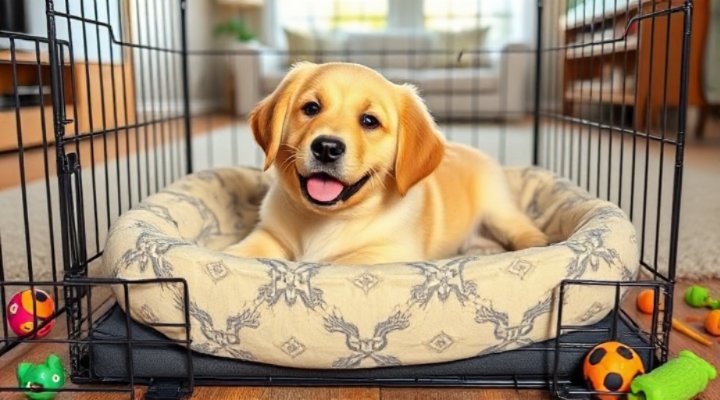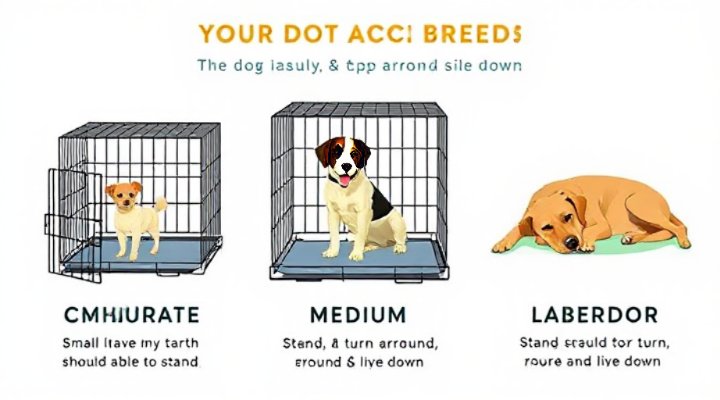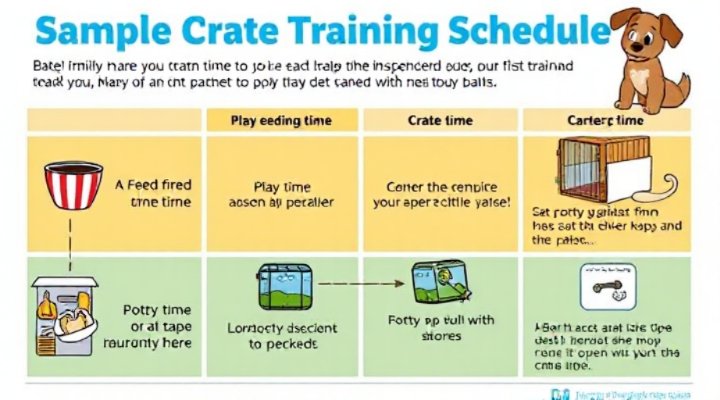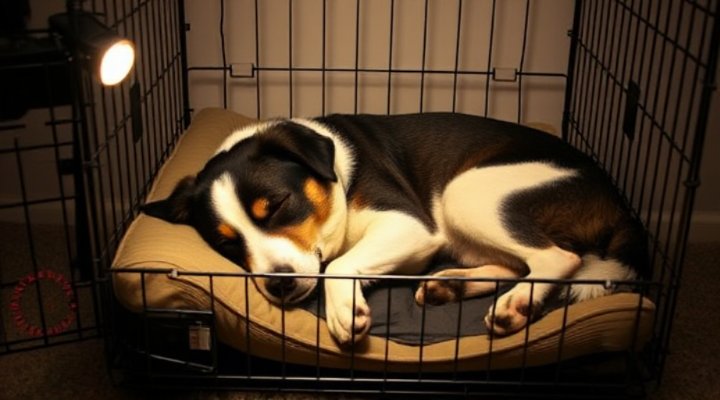Crate training for dogs is one of the most effective methods for house training and creating a safe space for your pet. When done correctly, it provides numerous benefits for both dogs and their owners. In this comprehensive guide, we’ll walk you through everything you need to know about making crate training a positive experience.

Why Crate Training Works for Dogs
Dogs are naturally den animals, which means they instinctively seek out small, enclosed spaces for security. This is why crate training taps into their natural instincts. A properly introduced crate becomes your dog’s personal sanctuary – a place where they can retreat when tired or overwhelmed.
According to the American Veterinary Medical Association, crate training can significantly reduce anxiety in dogs when implemented correctly. Moreover, our article on Best Way to Crate Train a Puppy offers additional expert tips that complement this guide.

Choosing the Right Crate for Your Dog
The first step in successful crate training is selecting the appropriate crate. There are several types available:
- Wire crates – provide excellent ventilation and visibility
- Plastic crates – more enclosed, great for travel
- Soft-sided crates – lightweight and portable
- Heavy-duty crates – for larger or more energetic dogs
Size matters tremendously in crate training. As shown in our Puppy Cage Guide, the crate should be large enough for your dog to stand up, turn around, and lie down comfortably, but not so large that they can eliminate in one corner and sleep in another.

Introducing Your Dog to the Crate
The introduction phase is crucial for creating positive associations. Here’s a step-by-step approach:
- Place the crate in a common area with the door open
- Put comfortable bedding and some treats inside
- Let your dog explore at their own pace
- Use positive reinforcement when they enter voluntarily
- Gradually increase time spent in the crate
Remember, patience is key. Some dogs might take to the crate immediately, while others need several days or even weeks to feel completely comfortable. For dogs showing resistance, our Dog Behavior Specialist Guide offers helpful strategies.

Establishing a Crate Training Routine
Consistency is vital in crate training. Develop a schedule that includes:
- Regular feeding times near the crate
- Scheduled potty breaks (especially for puppies)
- Controlled periods of crate time
- Plenty of exercise before crate time
The American Kennel Club recommends starting with short intervals (15-30 minutes) and gradually increasing duration. Never use the crate as punishment, as this creates negative associations that undermine the training process.

Troubleshooting Common Crate Training Challenges
Even with the best approach, you might encounter some hurdles:
Whining or Barking
This is normal initially. Resist the urge to let your dog out when they vocalize, as this teaches them that making noise gets results. Instead, wait for a moment of quiet before opening the crate.
Accidents in the Crate
If this occurs, reassess your schedule. Puppies typically can’t hold their bladder for more than a few hours. Our Dog Potty Training Guide provides helpful timing guidelines.
Separation Anxiety
For dogs with severe anxiety, consult our Separation Anxiety Guide before continuing crate training.
Advanced Crate Training Tips
Once your dog is comfortable with basic crate training, you can:
- Use the crate for mealtime to reinforce positive associations
- Practice short departures to prevent separation anxiety
- Gradually move the crate to different locations in your home
- Introduce verbal cues like “crate” or “kennel up”
Remember that every dog is unique. What works for one might need adjustment for another. The key is observing your dog’s reactions and adapting accordingly.
When to Phase Out the Crate
While some dogs enjoy having their crate available indefinitely, others may outgrow the need. Signs your dog might be ready include:
- Consistent good behavior when left alone
- No destructive tendencies
- Reliable house training
- Showing less interest in the crate
You can start by leaving the crate door open, then eventually remove it if your dog prefers other resting spots. However, many owners choose to keep the crate available as a permanent safe space.
Final Thoughts on Crate Training for Dogs
When implemented with patience and positivity, crate training provides numerous benefits for both dogs and owners. It creates a safe haven for your pet, aids in house training, prevents destructive behavior, and makes travel safer. Most importantly, it strengthens the bond between you and your furry companion through trust and understanding.
For more dog training resources, explore our Online Dog Training Courses or Private Training Sessions for personalized guidance.
Related Keywords: dog crate training, puppy crate training, how to crate train a dog, crate training benefits, house training with crate, dog behavior training, positive reinforcement training
